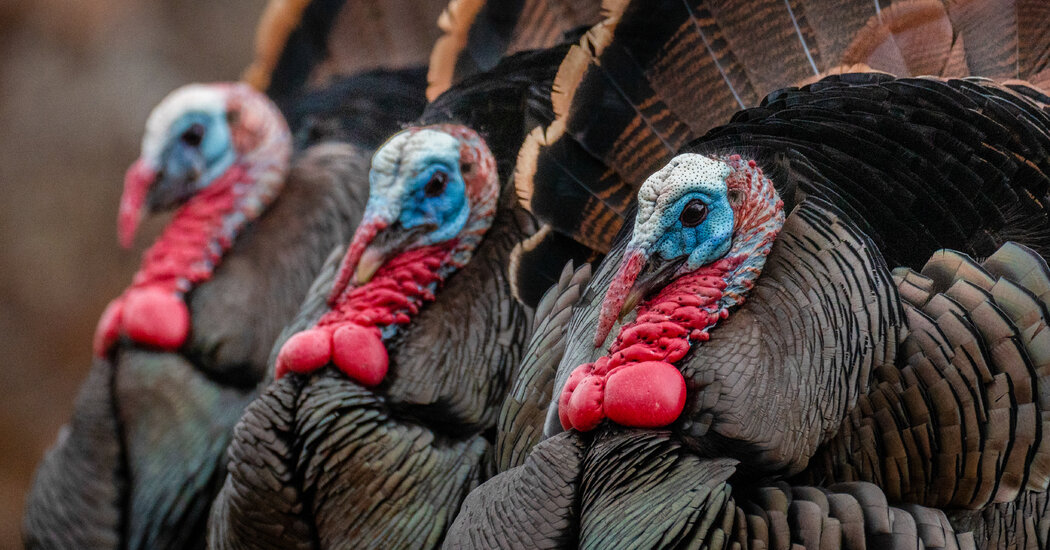As spring bursts forth, wild turkeys begin the mating game. Groups congregate in lawns and fields — and sometimes in the middle of the street. Males puff out their iridescent feathers, fan their tails and drag their wings on the ground in a vie for the right to breed. Their faces and necks turn dazzling shades of blue and red.
Once rare and elusive denizens of America’s woodlands, these heaviest of the galliform birds (chickens and their relatives) have gone urban. Wild turkeys live in the residential neighborhoods around my home in Madison, Wis.
A few years ago, their elaborate courtship displays fascinated me so much that I began to photograph them — and, as I’ve learned, there’s more happening than meets the eye.
For starters, turkeys of a feather flock together. Males, known as toms, can form lifelong flocks with their brothers. Dr. Alan Krakauer, a biologist and fellow photographer, studied this as a graduate student at the University of California, Berkeley. He discovered that toms in a flock were anywhere from full to half-siblings. These bands of brothers cooperated to court females, or hens, and chase off competing males.
Remarkably, though, only the dominant male mated and fathered offspring. The subordinate brothers served as “wingmen,” “bodyguards,” or “backup dancers,” to use Dr. Krakauer’s colorful descriptions. “They have what I think of as a support role,” he said.
Despite the potential for lifelong celibacy, wingmen benefited from the arrangement, Dr. Krakauer found — at least by the raw calculus of evolution. On average, dominant males with wingmen produced seven offspring a season, whereas solo males produced fewer than one. Since the males were closely related, those seven offspring contained more of the wingmen’s genes than if they’d sired a single chick themselves.
“They’re helping their brother get a lot more females than either of them would get on their own, so this cooperation seemed particularly helpful,” explained Dr. Krakauer. “That seemed to be surprising for people at the time.”
Anyone who’s had a brother knows the vicissitudes of fraternal relations. While brothers generally cooperate during the mating season, intense fighting breaks out at other times, as they jostle for rank. Turkeys have formidable weapons: large bodies, powerful wings and spurred feet. On one occasion, I saw a fight so violent that spittle flew — like when a boxer is hit by a knockout punch.
While males are…
Click Here to Read the Full Original Article at NYT > Travel…
